 "ttyymmnn" (ttyymmnn)
"ttyymmnn" (ttyymmnn)
11/02/2020 at 12:35 • Filed to: wingspan, Planelopnik
 5
5
 12
12
 "ttyymmnn" (ttyymmnn)
"ttyymmnn" (ttyymmnn)
11/02/2020 at 12:35 • Filed to: wingspan, Planelopnik |  5 5
|  12 12 |
!!! UNKNOWN CONTENT TYPE !!!
From the Planes You’ve (Probably) Never Heard Of Department of Wingspan , we bring you the Douglas XA2D Skyshark (and friends).
!!! UNKNOWN CONTENT TYPE !!!
Wars are a catalyst for rapid technological development, and at the same time that piston-powered aircraft design was reaching its zenith towards the end of the Second World War, the jet engine entered the scene. Germany was the first to field an operational jet fighter, and they were soon followed by Great Britain and the US. While jet performance was impressive, miles per gallon was not. The gas guzzling turbojets of the era could fly fast, but not that far, and fixing a propeller to a spinning jet engine to create a turboprop seemed to be the best way to get the most from jet power while taking advantage of the range of a propeller plane.
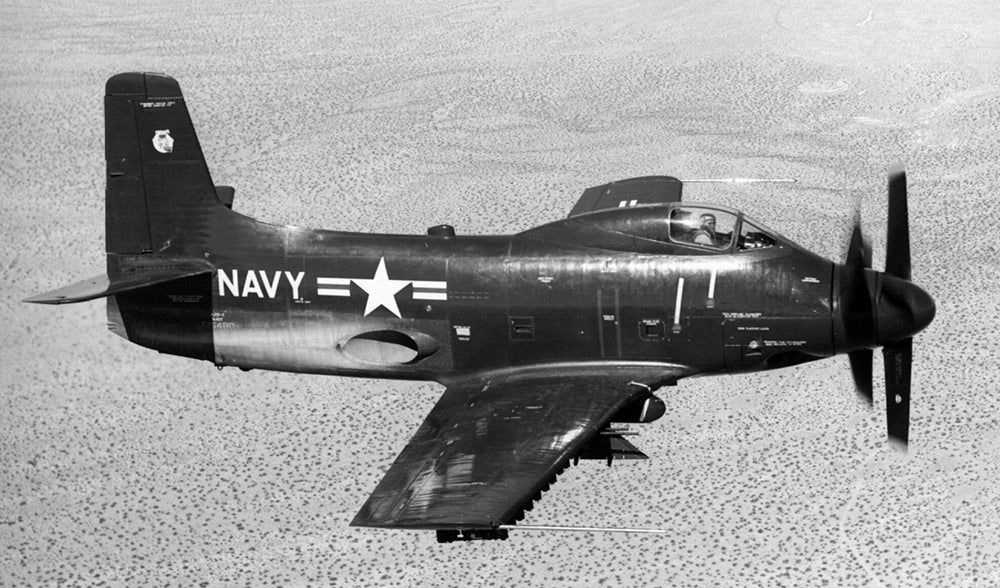
The first pre-production Douglas A2D-1 Skyshark. This aircraft It made its first flight on June 10, 1953 but crashed near Lake Los Angeles on August 5, 1954 after suffering a gearbox failure. The pilot ejected safely.
Back in 1941, the Douglas Aircraft Corporation had begun work on a dive bomber for the US Navy, an aircraft that eventually took the form of the !!!error: Indecipherable SUB-paragraph formatting!!! . The Destroyer was a large, three-man dive bomber and torpedo bomber, but by the time it entered service in 1944 the war was drawing to a close, the dedicated torpedo bomber had become an anachronism, and the Navy expressed a preference for aircraft with a single pilot. !!!error: Indecipherable SUB-paragraph formatting!!! and his team at Douglas had already been working on a single-seat Destroyer known as the BTD-2, and that aircraft served as the basis for the remarkable Douglas !!!error: Indecipherable SUB-paragraph formatting!!! , a master-of-all-trades workhorse that served the US into the 1970s. But was there room to improve the Skyraider?
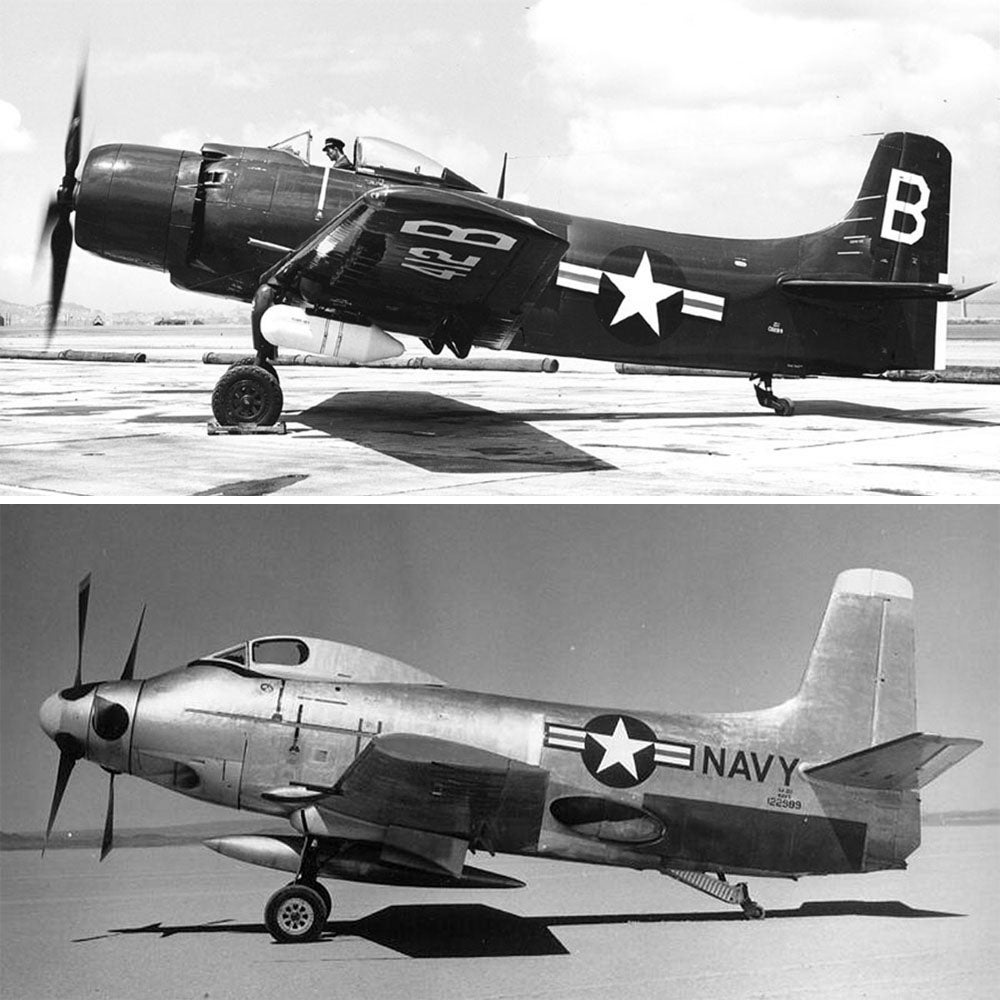
A Skyraider with a turboprop engine. Douglas AD-1 Skyraider, top, with a Douglas XA2D-1 below for comparison.
With the inexorable push toward jet power, the Navy wanted to know what would happen if Douglas gave the Skyraider a turboprop engine instead of the !!!error: Indecipherable SUB-paragraph formatting!!! it came with from the factory. Along with improved performance, the Navy hoped to fly the new turboprop from their !!!error: Indecipherable SUB-paragraph formatting!!! escort carriers. After all, the Navy had 50 of them left over from the war, and it would be easier for a turboprop-powered aircraft to take off from a shorter deck. So Douglas engineers started with the Skyraider and took an experimental !!!error: Indecipherable SUB-paragraph formatting!!! dual turbine engine, mounted it under the cockpit, and fixed massive three-bladed fully-reversible contra-rotating propellers to it. The XT40 provided 5,500 shaft horsepower, a maximum speed just shy of 500 mph, and a combat range of over 500 miles.
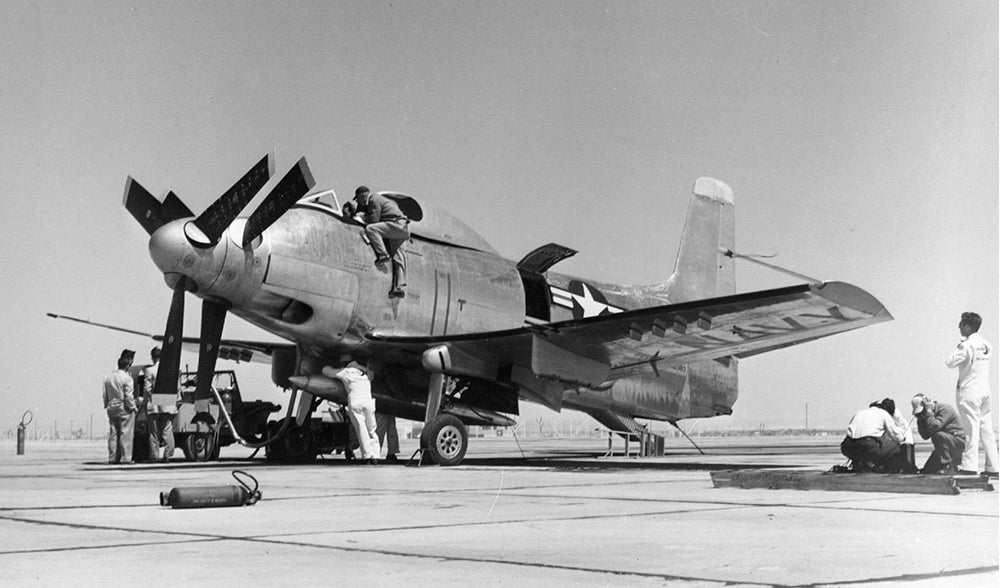
Engineers prepare the second prototype XA2D-1 Skyshark for a flight at Edwards Air Force Base circa 1952
The Skyshark took its maiden flight on March 26, 1950, but the new turboprop engine proved problematic. So much so that US Navy test pilot Cdr. Hugh Wood was killed when a clutching mechanism in the engine malfunctioned during a flight of the first prototype. Delays to correct the problems with the engine stretched into 1953, and then the first production engine to fly suffered the loss its propellers. By this time, jet engine technology was maturing, the Skyshark was no longer deemed necessary, and the project was canceled. Of the two prototypes and 10 pre-production Skysharks Douglas built, just one aircraft remains, and it is on display at the San Diego Air and Space Museum.
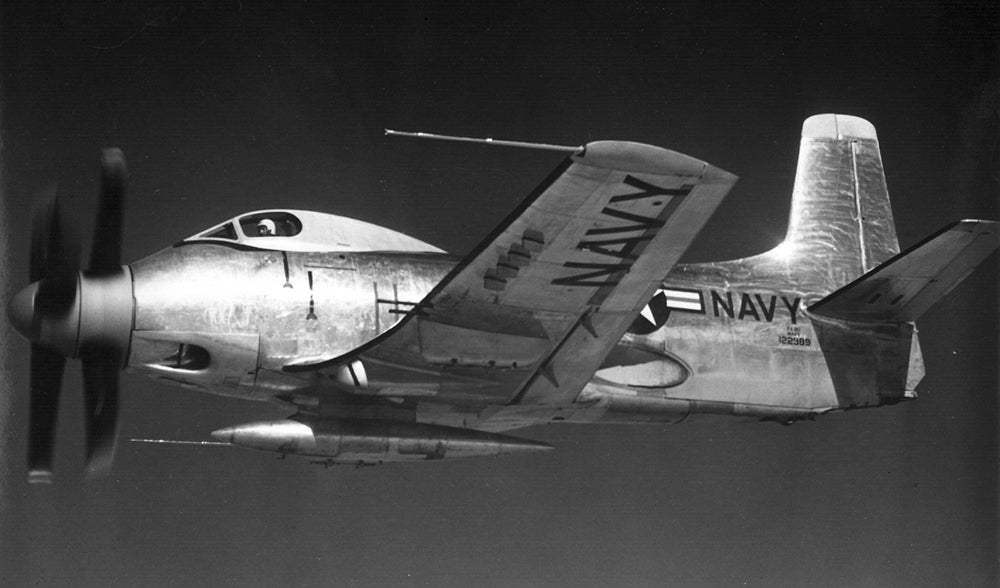 !!!CAPTION ERROR: MAY BE MULTI-LINE OR CONTAIN LINK!!!
!!!CAPTION ERROR: MAY BE MULTI-LINE OR CONTAIN LINK!!!
!!! UNKNOWN CONTENT TYPE !!!
While the Skyshark did not catch on in US service, the idea of using a turboprop in what was essentially a single-engine aircraft did find success in other countries, particularly in naval aviation. The arrangement works well because the turboprop provides better range at medium altitudes, and the propeller provides more power at takeoff, making it easier to get off the deck of the carrier without burning large amounts of fuel. The British and French fielded a few such aircraft, mainly in the antisubmarine warfare (ASW) role.
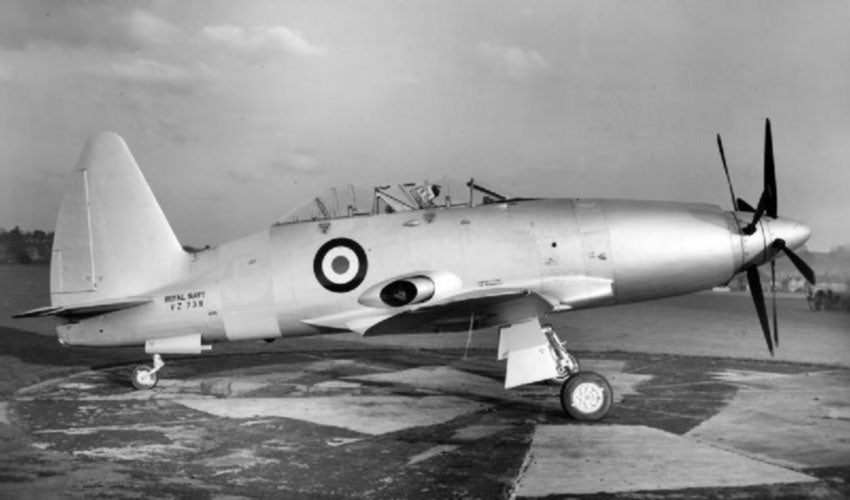
The Westland Wyvern (the Brits have the coolest airplane names), first flown in 1946, was a single-seat strike aircraft that operated from Royal Navy carriers and was designed to carry rockets, bombs, or a single torpedo. The Wyvern was powered by a single !!!error: Indecipherable SUB-paragraph formatting!!! turboprop and had a top speed of 383 mph. A total of 127 Wyverns were built, and the type saw action during the 1956 Suez Crisis where they flew 79 sorties from the carrier HMS Eagle .
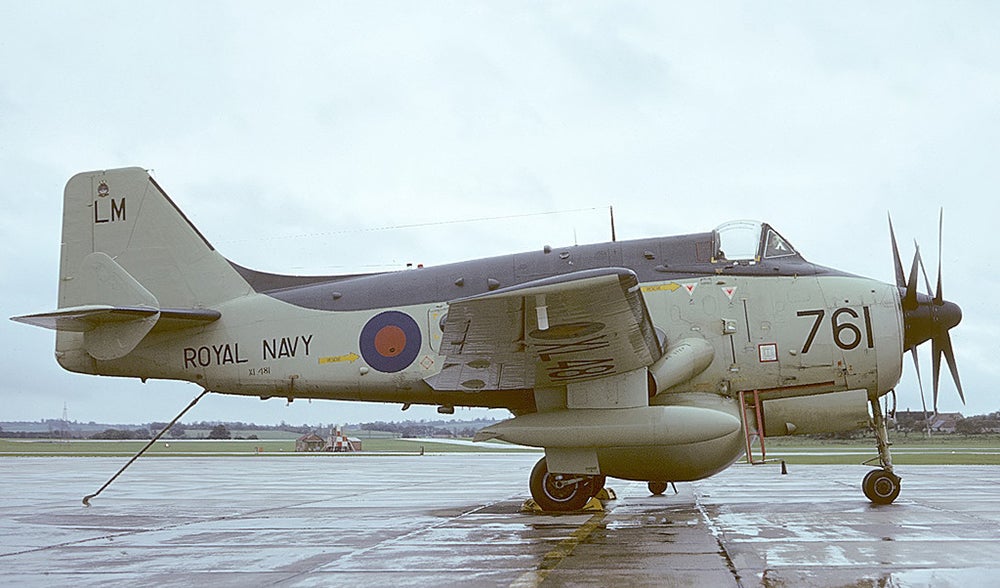
The Fairey Gannet was another British contra-rotating turboprop, but where the Wyvern was powered by a single turboprop engine, the Gannet received an !!!error: Indecipherable SUB-paragraph formatting!!! engine. Like the XT40, the Double Mamba was two engines side-by-side and joined through a gearbox, though each engine drove a separate propeller (on the Skyshark, the two engines drove both propellers simultaneously). The Gannet first flew on September 19, 1949, was was designed for ASW and ground attack (303 built), and was later covered into an electronic countermeasures platform (45 built). The Gannet was retired by 1978.
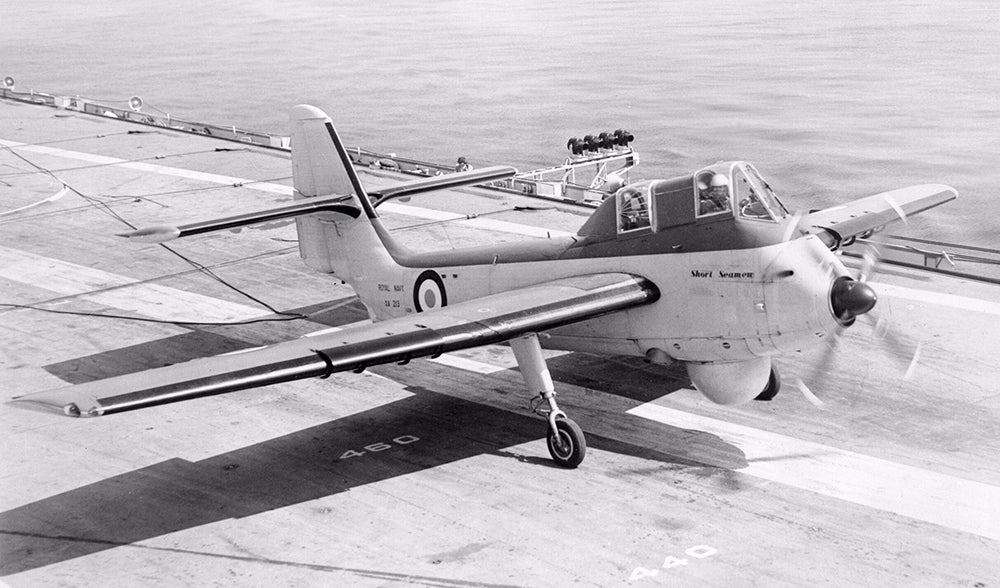
The Short Seamew has been called, for obvious reasons, a camel amongst race horses for both its shape and its relative plodding pace. It was designed as a replacement for Britain’s Grumman Avengers, and took its maiden flight in 1953. The Seamew was originally designed to be powered by a Rolls-Royce Merlin piston engine, but the Royal Navy was phasing out all piston engines and ordered Shorts to use the !!!error: Indecipherable SUB-paragraph formatting!!! turboprop engine instead. The Seamew took its maiden flight on August 23, 1953, but only 26 were built and the type was retired after only four years of service.
!!! UNKNOWN CONTENT TYPE !!!
!!! UNKNOWN CONTENT TYPE !!!
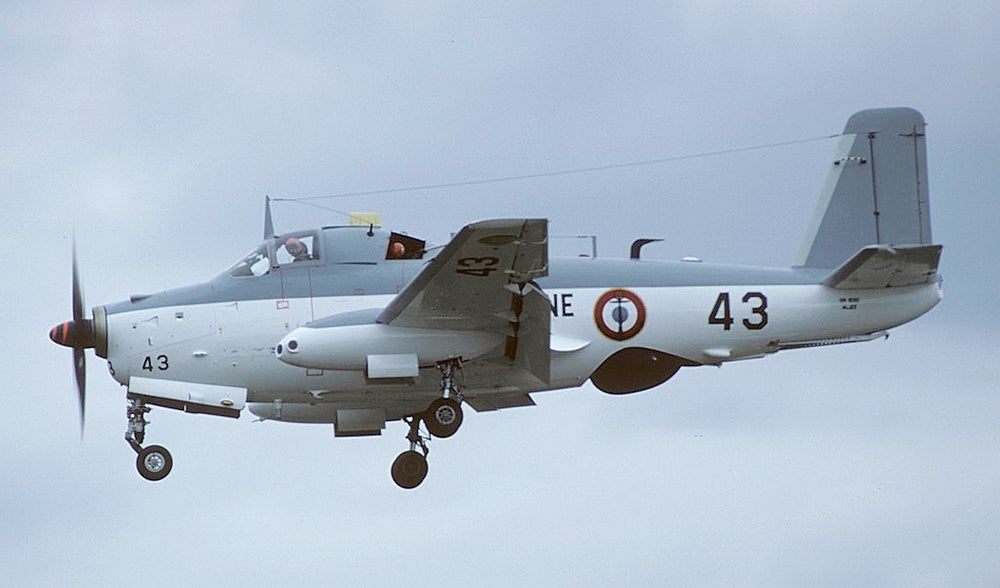
The sole French entrant into the turboprop parade is the Bréguet 1050 Alizé . Like its British counterparts, the Alizé, which translates as “Tradewind,” was developed for the carrier-borne ASW role. It had a three-man crew, with pilot and navigator seated side-by-side in front while the radar operator sat behind. Power came from a single !!!error: Indecipherable SUB-paragraph formatting!!! turboprop which gave the Alizé a top speed of 322 mph. The Alizé took its first flight on October 6, 1956, and served in the navies of both France and Pakistan. Pakistani aircraft took part in the Indo-Pakistani War of 1971 flying from the carrier INS Vikrant , and French Alizés took part in the NATO air campaign over the former Yugoslavia as late as 1999 flying from the French carrier Foch .
!!! UNKNOWN CONTENT TYPE !!!
Connecting Flights
!!! UNKNOWN CONTENT TYPE !!!
!!! UNKNOWN CONTENT TYPE !!!
!!! UNKNOWN CONTENT TYPE !!!
!!! UNKNOWN CONTENT TYPE !!!
!!! UNKNOWN CONTENT TYPE !!!
!!! UNKNOWN CONTENT TYPE !!!
If you enjoy these Aviation History posts, please let me know in the comments. You can find more posts about aviation history, aviators, and aviation oddities at !!!error: Indecipherable SUB-paragraph formatting!!! .
!!! UNKNOWN CONTENT TYPE !!!
 f86sabre
> ttyymmnn
f86sabre
> ttyymmnn
11/02/2020 at 12:52 |
|
I’m guessing that thing made all the noise.
 user314
> ttyymmnn
user314
> ttyymmnn
11/02/2020 at 12:58 |
|
It’s very odd, but the Skyshark’s prop looks smaller than the Skyraider’s, despite the opposite being true. Maybe because there’s only three blades, and they’re not tapered? That canopy is rather incongruous too; looks more like it belongs on an interceptor.
 ttyymmnn
> f86sabre
ttyymmnn
> f86sabre
11/02/2020 at 13:19 |
|
And then some.
 ttyymmnn
> user314
ttyymmnn
> user314
11/02/2020 at 13:21 |
|
The turboprop props are PHAT though. I’m sure they moved a hell of a lot of air. And I’m really not sure why they went with that metal canopy. I imagine they had good reason. Looks like they changed it for the -1 in the top photo.
 Future next gen S2000 owner
> f86sabre
Future next gen S2000 owner
> f86sabre
11/02/2020 at 13:37 |
|
Thunderscreech would like a word.
 Chariotoflove
> ttyymmnn
Chariotoflove
> ttyymmnn
11/02/2020 at 14:26 |
|
It’s so amazing the number of things that companies had the freedom to try in that era. Try and fail many times, but the failures taught them so much. The pace of innovation was crazy then, and we reap the benefits of all that now.
 ttyymmnn
> Chariotoflove
ttyymmnn
> Chariotoflove
11/02/2020 at 14:29 |
|
A lot changed when we were able to do computer models of everything, try it before you buy it. It’s certainly safer for the test pilots, but it’s a lot less interesting. Back then it was, “Will this work?” “I don’t know, let’s try it.”
Also, wars, and cold wars, lend themselves to big R&D budgets.
 Chariotoflove
> ttyymmnn
Chariotoflove
> ttyymmnn
11/02/2020 at 14:37 |
|
Yes. I am glad though of the tools that are available now. I think perhaps they were relied upon too much in the development of the F-35, which seemed to be more “buy it before you try it”, but still, what they can do without having to build anything or risk a life is astounding.
 ttyymmnn
> Chariotoflove
ttyymmnn
> Chariotoflove
11/02/2020 at 14:43 |
|
It would be interesting to research who was the last test pilot to die. The only one who comes to my mind is the pilot who died in the SpaceShipTwo crash back in 2014.
 Kid Cobalt
> ttyymmnn
Kid Cobalt
> ttyymmnn
11/02/2020 at 15:21 |
|
The Alizé flew with the Indian navy, and not that of Pakistan. Pakistan did however fly a French-built ASW plane:the B réguet 1150 Atlantic.
 user314
> ttyymmnn
user314
> ttyymmnn
11/02/2020 at 15:46 |
|
Yeah, they’re very broad for how short they are, more like V-22 rotors than props.
 ttyymmnn
> Kid Cobalt
ttyymmnn
> Kid Cobalt
11/02/2020 at 15:52 |
|
Thanks, I’ll take a look at that. I was writing that in a hurry.